Digitalis purple: description of varieties and secrets of cultivation
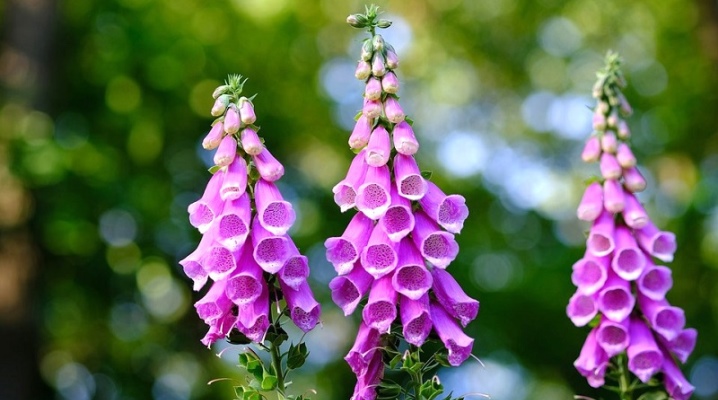
A large lush plant with flowers that look like bells will decorate any flower bed, space along the fences. It is about foxglove purple. What kind of plant it is, how to properly care for it, how to propagate it - this will be discussed in the article.

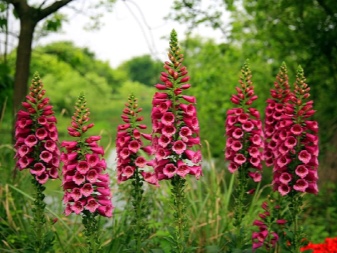
Description
Purple foxglove is a flowering plant of the norichnik family, or plantain. The second name is digitalis (which means “finger” in Latin). This name is due to the peculiarities of the appearance of the corolla - the flowers are similar to thimbles. Culture is both annual and perennial. Basically, this is a purple two-year-old, in the first year throwing out a rosette of leaves, in the second - a peduncle. The foxglove has a stable stem, the height of which reaches 120-150 cm, some varieties grow up to 200 cm. The stem seems to be fluffy due to the hairs covering it.
Basal leaf plates, reaching 30 cm in length, form a lush rosette. Leaves are dark green ovate-lanceolate. When looking at the leaves, it seems that they are two-colored. However, this is due to the fact that in the lower part of the leaf plates have pubescence with a silvery sheen. The lower leaves of the foxglove have petioles, while the stem leaves are petiolate.


The flowering period occurs in June-July, the flowers are distinguished by a variety of shades of petals. There are specks or hairs in the pharynx, their color is contrasting with respect to the main shade. Flowers sit in soft green cups, with sharp teeth, collected in abundant inflorescences. After flowering (by about September), the fruit is formed - a dark brown box filled with seeds.
In a flower bed, the plant looks like a bright accent; in flower beds, it is often used as an imitation of wild-growing herbs. However, foxglove is not grown in children's and public institutions - its leaves contain dangerous substances that slow down the work of the heart. At the same time, it has medicinal properties - the leaves are used in pharmacology. Beekeepers plant the plant for its melliferous qualities.
Central Asia and Southern Europe are considered the birthplace of culture.

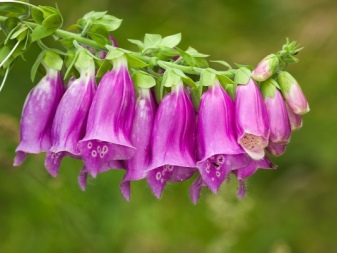
Overview of varieties
The genus includes 18 species of foxglove, the most famous of which are:
- large-flowered - plant height reaches 1 m, has large creamy yellow inflorescences;
- rusty - the plant reaches 1.8 m in height, the inflorescences are yellow-brown;
- pink;
- purple.
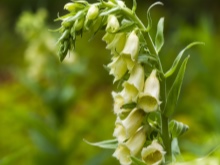
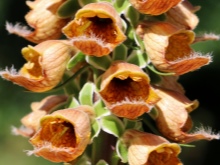

Among them, the most popular varieties are Elsie Kelsey (exclusively decorative type, characterized by white inflorescences with purple centers), "Camelot" (has bright pink flowers with white dots), "Sutton Apricot" (characterized by a delicate peach shade of flowers). Usually the plant reaches a height of 100-130 cm during the flowering period, with most of the stem being a lush inflorescence. However, there are also undersized varieties, for example, "Thumbelina"... At peak growth (and this is the flowering period) it reaches a height of 40-45 cm. It blooms profusely and for a long time, the color range can be diverse.
The variety "Red Dwarf", whose height is 30-35 cm, can boast of even more compact size. It blooms with large bright red bells from July to August.

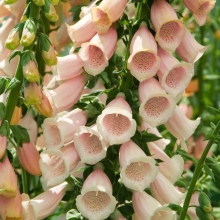
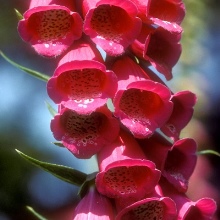
If you like tall plants, then you should pay attention to the variety "Spotted Giant"... It delights with its gigantic appearance - it grows up to 1.5-1.7 cm and blooms with spectacular flowers.These are snow-white petals covered with cherry touches. Large buds open slowly, resulting in a long flowering period. Flowers are suitable for cutting and stand well in a vase.
One of the common varieties of foxglove - "Muse"... This plant reaches a height of 120 cm, and about 80 cm is occupied by inflorescences. They are represented by large bells, the petals of which are painted in various shades of lilac and are additionally decorated with multi-colored spots. It blooms for a long time - from June to August.
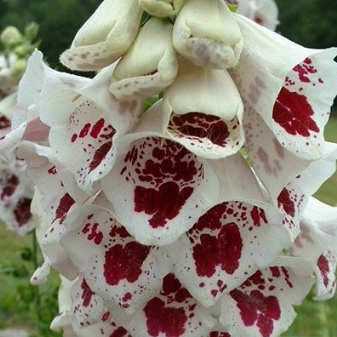

Planting and care rules
Digitalis is picky about the composition and quality of the soil. A well-dug soil with a slightly acidic or neutral pH is required. The presence of a drainage layer is mandatory - it is placed on the bottom of the hole during planting. The roots are straightened, sprinkled with earth and tamped. The plant is quite unpretentious, but it does not tolerate stagnant water, therefore, in the spring it is imperative to ensure the drainage of melt water - otherwise the roots will simply rot.
However, and lack of moisture negatively affects the plant, especially during the flowering period... In this case, the inflorescences become smaller and quickly fall off, sometimes not having time to fully open. It is better to water the plant at night. If the plant receives sufficient moisture, then it will bloom even in a dark place. In addition to watering, weeding and loosening of the soil are required, and fertilizers must be applied 2-3 times per season. If by the end of the season the roots are bared, this does not need to be scared, it happens.
However, be sure to sprinkle them with a dense layer of soil, otherwise they will freeze.
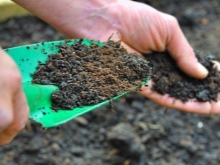

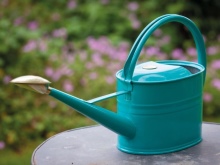
Reproduction methods
You can grow a plant from cuttings or seeds. The latter method is more common as the seeds germinate well. They are sown in the spring, the seeds are resistant to cold, not capricious. It is worth noting the cheapness of this method, and the preservation of seed germination for up to 3 years. You can get the seeds of the plant by waiting for the fruits of the plant to ripen. This occurs in the second year of digitalis cultivation. They are collected from boxes, dried and sieved. Dry them in a well-ventilated cool place with a humidity level of 10%. Seeds can be grown as seedlings with subsequent transfer to the ground or directly in the open ground. In the first case, they are sown already at the beginning of March, using ordinary soil for seedlings or indoor flowers. The seeds are poured into the rows, it is not necessary to sprinkle them with earth, it is enough to moisten with a spray bottle and cover with glass or film.
Periodically, you need to ventilate and moisten the soil, and after about 10-14 days the first shoots will appear. After that, the film is removed and cotyledon leaves are expected to appear. During this period, the rows are thinned out. When the seedlings grow up and acquire 5-6 leaves, they are transplanted into separate containers. From mid-April, seeds can be sown outdoors. To do this, you must first dig up the ground and add humus (4 kg per 1 sq. M). This is done about 2 weeks before planting the seeds.
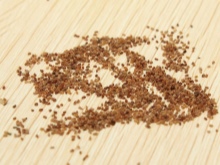
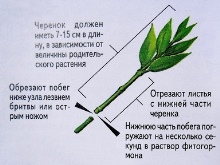
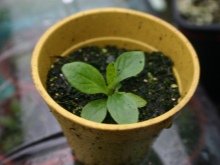
The seeds are planted in rows, keeping the distance between each row at 45 cm. You can pre-soak them in solutions that improve germination. You should not sprinkle the grains with earth (they are too small to break through the soil layer), you can sprinkle a little with sand and moisten. Otherwise, the care is no different from what is done when growing seedlings. After the emergence of seedlings, they are thinned out, after a while they are seated.
For propagation by basal processes, the stem should be cut. After about 3 weeks, 6-8 basal rosettes with small leaves are formed on it. They need to be separated from the base and rooted in the ground. This is done in May, until the end of summer they will take root, get stronger and be able to overwinter together with adult plants. And by next summer they will flower.



Diseases and pests
Digitalis has a pretty strong immunity.The appearance of a fungus or bacterial infection is usually associated with improper care or adverse weather conditions. So, high humidity can provoke the formation of gray rot and powdery mildew, the main signs of which are gray spots and plaque on the leaves. At first, it is better to use special fungicides by spraying plants with them. If the disease has also captured the roots, then the plant must be urgently destroyed before it infects the rest.
Of the pests, the foxglove is most often attacked by the garden aphid. Small parasites can be found on the stem, the lower part of the leaves. Their vital activity becomes the reason that the plant withers, and eventually dies.
Specialized drugs ("Fufanon", "Fitoverm", "Iskra") help to destroy blood-sucking enemies.

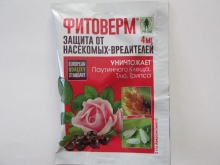

In the next video, you will find useful information about sowing, planting and caring for foxglove.







































































































The comment was sent successfully.